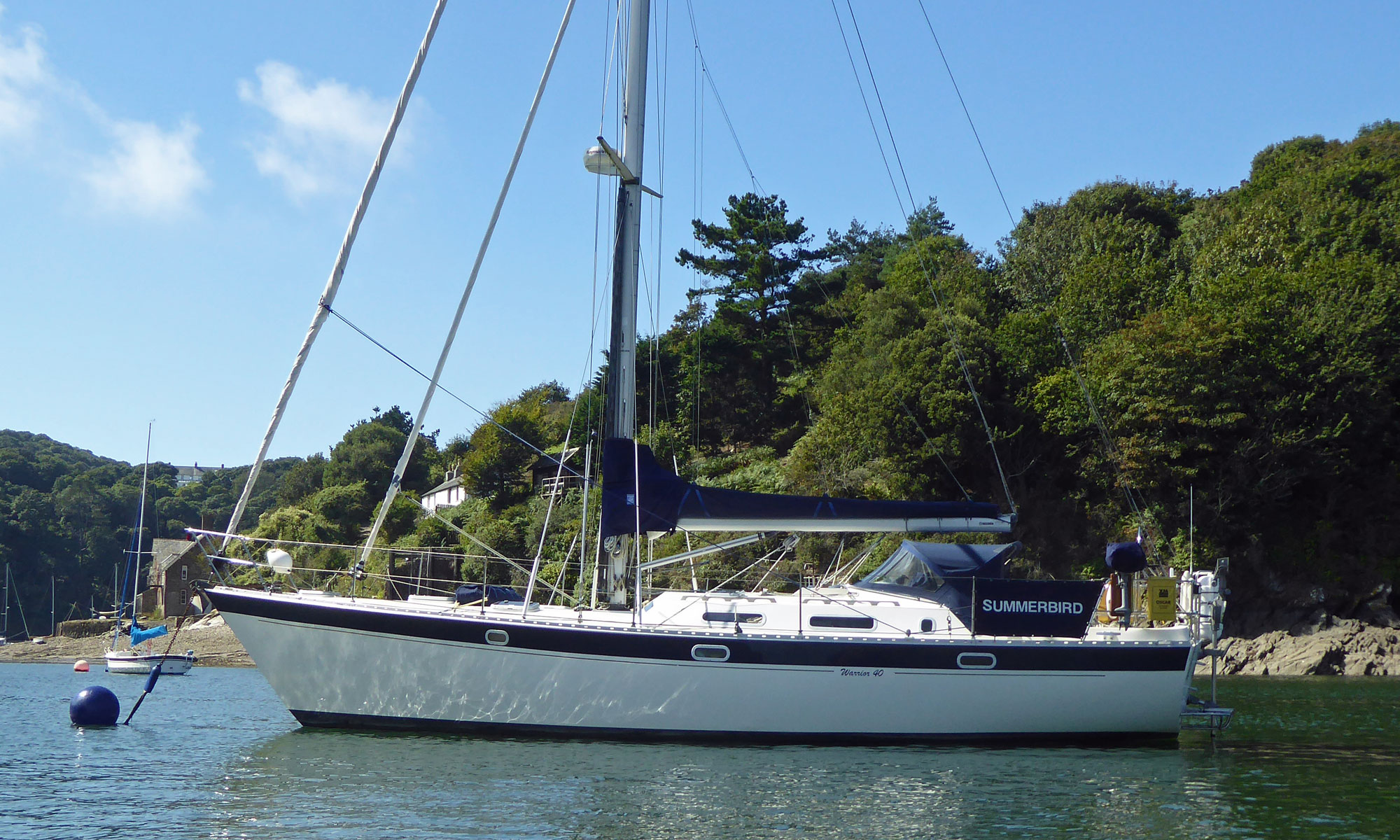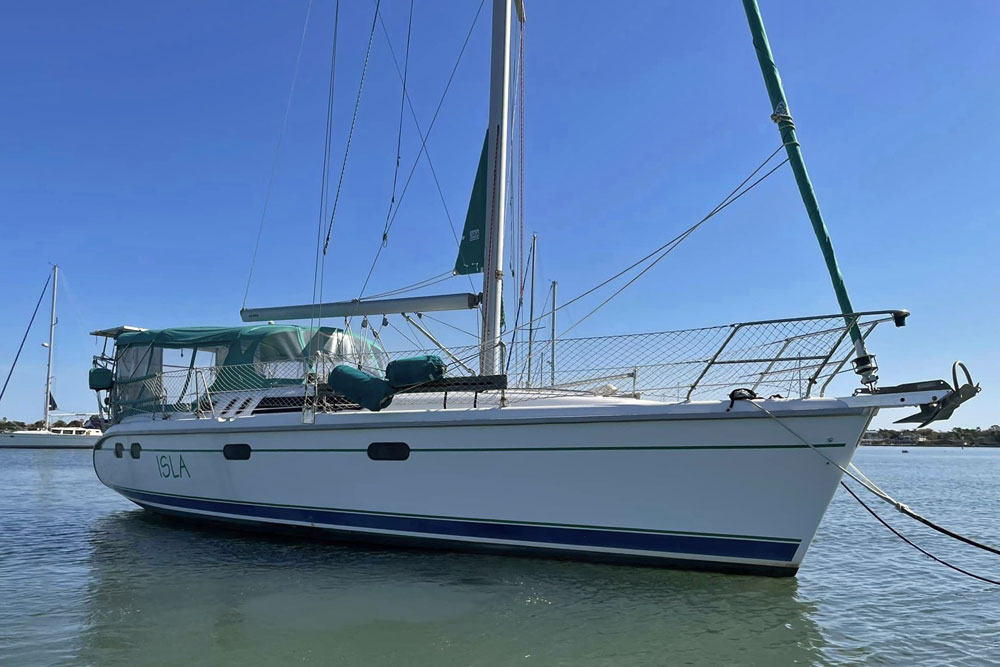Understanding Boat Performance & Design Ratios.
In a Nutshell
Understanding boat performance ratios is a game-changer. These simple numbers help you size up a sailboat's character before you ever step aboard. The Displacement/Length Ratio (D/L) tells you a boat's relative weight, which impacts its speed and motion at sea. The Sail Area/Displacement Ratio (SA/D) shows you how well-powered it is for that weight. Other key ratios, like Ballast/Displacement and the Prismatic Coefficient, offer further insights into stability and hull efficiency. I've found that a low D/L ratio and a high SA/D ratio usually point to a faster boat, but comfort, stability, and handling are just as important for a successful passage.
Table of Contents
- How Do Boat Displacement & Performance Ratios Work?
- What Is the Displacement/Length (D/L) Ratio?
- What's the Sail Area/Displacement (SA/D) Ratio?
- The Ballast & Ballast/Displacement Ratio
- The Comfort Ratio & Its Role in Passage-Making
- The Prismatic Coefficient & Modern Hull Shapes
- The Limitations of Design Ratios: Why the Numbers Don't Tell the Whole Story
- Frequently Asked Questions
How Do Boat Displacement & Performance Ratios Work?
I know that understanding boat performance ratios can feel complex. But you'll find they're invaluable tools for evaluating a boat's characteristics before you ever step aboard. They tell a story about a boat's intended purpose, whether it's a nimble racer or a heavy-duty offshore cruiser. For a more comprehensive look at all the key metrics and regulations that govern a sailboat's design, you can check out our article, "Mastering Sailboat Design Ratios & Regulation for Performance & Safety".
The core concept is boat displacement, which is the weight of the water a boat displaces when it's afloat. This weight is equal to the boat's own weight, including its structure, rig, stores, and crew. It's most often expressed in long tons (2,240 lbs), but it can also be stated in cubic feet (1 ft³ = 64 lbs in salt water).
What Is the Displacement/Length (D/L) Ratio?
The Displacement/Length Ratio allows you to compare the relative "heaviness" of boats regardless of their size. A boat with a lower D/L ratio is lighter for its length, requiring less power to move through the water. This generally translates to higher speed potential. A boat with a higher D/L ratio is heavier and moves more water aside, which often results in a more comfortable motion in a seaway.
The formula for calculating the Displacement/Length Ratio is:
D/(0.01L)3
- D is the boat displacement in long tons (1 long ton = 2,240 lbs)
- L is the waterline length in feet
To put this into context, here's a classification of D/L ratios.
| Displacement/Length Ratio | Classification |
|---|---|
| Under 90 | Ultralight |
| 90 to 180 | Light |
| 180 to 270 | Moderate |
| 270 to 360 | Heavy |
| 360 and over | Ultraheavy |
For example, a high-performance racing yacht may have a D/L Ratio of 80, while a robust, heavy-displacement cruiser designed for comfortable bluewater passages, like a Colin Archer type, could have a ratio of 400 or more.
What's the Sail Area/Displacement (SA/D) Ratio?
The Sail Area/Displacement Ratio is a measure of a sailboat's power-to-weight ratio. It tells you how much sail area is pushing a given displacement, giving you a strong sense of a boat's performance potential in light to moderate air.
The formula for calculating the Sail Area/Displacement Ratio is:
SA/(DISPL)0.67
- SA is the sail area in square feet
- DISPL is the boat displacement in cubic feet
Sail Area/Displacement ratios generally range from around 14 for a motorsailer to 20 or more for a racing machine. A higher SA/D ratio suggests a boat is well-powered and will be quicker in lighter winds, but it also means the boat may require more frequent sail changes and crew attention to manage its power.
It's important to note that published SA/D figures can be misleading. Many builders use the area of the main and a 100% foretriangle, but the boat might be sold with a larger, overlapping genoa. For a true picture, you've got to verify how the sail area was calculated or use the actual sail plan of the boat you're considering.
The Ballast & Ballast/Displacement Ratio
A boat's ballast is the dense weight—typically lead or iron—placed low in the keel or hull to provide stability and resist the heeling force of the wind on the sails. The Ballast/Displacement Ratio is a simple but telling metric that expresses this weight as a percentage of the boat's total displacement.
- Calculation: Ballast weight divided by total displacement.
- Significance: A higher ratio has traditionally indicated a "stiffer" boat, meaning it's more resistant to heeling and can carry a larger sail plan. However, modern designs with deep, high-aspect-ratio keels and bulbs can achieve the same or greater stability with a lower ballast ratio. This can lead to a lighter, faster boat with less wetted surface area.
For the offshore sailor, a boat with a good ballast ratio offers a reassuring stability that allows for more comfortable sailing, especially in rough conditions. It means less time spent reefing and more confidence when faced with a squall.
The Comfort Ratio & its Role in Passage-Making
While speed is a consideration, a truly successful passage is often defined by comfort and a good motion at sea. The Comfort Ratio, developed by yacht designer Ted Brewer, provides a useful rule of thumb for predicting just that.
- How it Works: The ratio is a calculation based on the boat’s displacement, waterline length, and beam. It doesn't measure a boat's speed, but rather its motion in a seaway.
- What the Numbers Mean: A lower number (e.g., in the 20s) indicates a lighter, more lively boat that may feel twitchy and uncomfortable in a swell. A higher number (e.g., in the 40s or 50s) suggests a heavy, robust boat with a gentler, more predictable motion that makes long passages more comfortable for the crew. For example, a heavy-displacement double-ender often has a high comfort ratio and is known for its sea-kindly motion.
This ratio is an excellent tool for a cruising sailor who values a comfortable ride over maximum speed, helping them choose a boat that will be a stable home at sea rather than a demanding racehorse.
The Prismatic Coefficient & Modern Hull Shapes
For a more advanced understanding of a boat’s speed potential, you can look at the Prismatic Coefficient (Cp). This ratio describes the shape of a boat's submerged hull, specifically its fullness or fineness. It's the ratio of the underwater hull volume to the volume of a rectangular prism with the same length and maximum cross-sectional area.
- Low Cp (0.50 or less): This signifies a fine-ended hull, often seen on traditional long-keel cruising boats. They're efficient at low speeds but can be inefficient at higher speeds, as they tend to "squat" or create a large stern wave.
- High Cp (0.54 or more): This is characteristic of modern racing hulls with wider, fuller sterns. These hulls are designed to "plane" or surf at higher speeds and are far more efficient at covering distance quickly, but they may be less comfortable in a following sea.
Modern sailboat design has leaned toward higher prismatic coefficients to maximize performance, particularly in boats with wide sterns that can generate more lift and reduce wave-making drag. That's a key reason why today's cruisers, even those with significant displacement, can be surprisingly fast.
The Limitations of Design Ratios: Why the Numbers Don't Tell the Whole Story
While boat performance ratios are useful, they're only a starting point. They're based on simple formulas that can’t account for the countless variables that truly define how a sailboat performs.
- Hull Shape: Ratios don't fully capture modern hull designs. A wide stern and a fine entry, common on today's cruising boats, create a different sailing experience than a traditional hull with the same displacement and waterline length.
- Keel & Rudder Design: The type of keel (full, fin, or wing) and the rudder (skeg-hung or spade) have a massive impact on a boat's tracking, stability, and handling. A deep fin keel, for example, can give a lighter boat surprising stiffness and upwind performance.
- Rig & Sail Plan: The formulas assume a standard rig. In reality, the quality of the sails, the mast's flexibility, and the size of the headsail all have a significant impact on power and performance that the simple Sail Area/Displacement ratio can't fully reflect.
- Human Factor: Ultimately, how a boat feels to sail—its responsiveness, the forces on the helm, and its overall motion—is subjective. A boat with a lower comfort ratio may feel exhilarating to one person and exhausting to another.
From my own sailing experience, I can tell you that a boat's feel under sail is often more telling than what the numbers suggest. Ratios help you narrow down your search, but a sea trial is the only way to truly understand a boat's character.
This article was written by Dick McClary, RYA Yachtmaster and author of the RYA publications 'Offshore Sailing' and 'Fishing Afloat', member of The Yachting Journalists Association (YJA), and erstwhile member of the Ocean Cruising Club (OCC).
Frequently Asked Questions
What's the difference between boat displacement and weight?
What's the difference between boat displacement and weight?
For a boat afloat, they're the same. Displacement is the weight of the volume of water the boat displaces, which is exactly equal to the boat's total weight.
Why is a boat’s waterline length more important than its overall length?
Why is a boat’s waterline length more important than its overall length?
Waterline length is the part of the hull that is actually in the water. It directly affects the speed potential of a displacement hull and is used in key performance formulas.
How do I find a boat's Displacement/Length Ratio and Sail Area/Displacement Ratio?
How do I find a boat's Displacement/Length Ratio and Sail Area/Displacement Ratio?
Many boat specifications list these figures. You can also use online calculators by inputting the boat's displacement and waterline length, which are typically available from the manufacturer.
The following sources were used:
- Sailboat Design Ratios: https://www.rustleryachts.com/useful-formulas-to-help-you-choose-a-boat/
- Performance & Hull Design: https://www.yachtingmonthly.com/yacht-reviews/understand-boat-statistics-30154
Recent Articles
-
Yacht Clearance in the Caribbean: A Sailor's Guide
Nov 25, 25 07:13 AM
Navigating yacht clearance in the Caribbean is essential for a smooth sailing trip. This guide, written by an experienced sailor, explains the required papers, procedures & tips for a hassle-free expe… -
Beneteau Oceanis 36CC: Specs, Ratios & Cruising Suitability
Nov 25, 25 06:08 AM
Detailed analysis of the Beneteau Oceanis 36CC centre cockpit sailboat. Includes design ratios, full specifications, and practical assessment of its suitability for experienced offshore and liveaboard… -
Essential Boat Toilet Maintenance & Systems: A Sailor’s Guide
Nov 24, 25 01:17 PM
Master boat toilet maintenance, from manual sea heads to 12v electric systems. Get an experienced offshore sailor’s guide on avoiding clogs, leaks, & bad smells.














